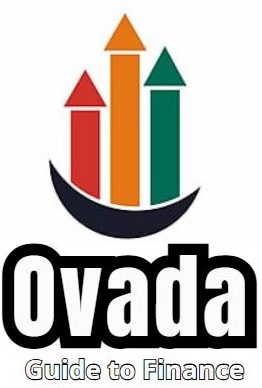
The Robor (Romanian interbanca offer rate) represents an essential financial indicator within the banking market in Romania, because it directly influences the cost of loans granted to her, including mortgage and consumption credits. Here are the most important details on this barometer of financial conditions in the interbank market, an important point of reference to establish the variable interest in credit contracts.
What does Robor mean and how is he calculated?
The Robor represents the average interest rate to which commercial banks in Romania grant loans to her on the interbanca market. This index is calculated daily by the National Bank of Romania (BNR), based on the shares provided by the first 10 banks on the market, selected according to their activities on the monetary market.
Robor is determined as an arithmetic average of interest rates in which participating banks are willing to offer deposits to other financial institutions, for different maturity: one day (during the night), one week, three months, nine months and twelve months. In the calculation process, extreme values (the highest and lowest) are excluded, to obtain an average.
For loans in her with variable interest, the effective annual interest is composed of Robor to a certain maturity (usually 3 or 6 months) plus a fixed margin established by the bank. Therefore, Robor’s fluctuations directly influence the value of monthly rates:
- Robor growth: it causes the increase of total interest, which leads to higher rates for the debtor;
- Decreased Robor: leads to a reduction in total interest, with consequent lower rates.
Factors that influence Roboro
Robor’s level is influenced by several economic, monetary and market factors. Here are the main factors that influence Roboro:
The monetary policy of the National Bank of Romania (BNR)
BNR decisions relating to the interest rate have a direct impact on the Robor. If the BNR increases the interest of monetary policy, Robor tends to grow.
The NBR can intervene on the monetary market through the sterilization or injection of liquidity, thus influencing the level of interbank interest. In addition, the modification of the RMO rate (compulsory minimum reserves) for banks affects liquidity in the market and, implicitly, the Robor.
Liquidity in the banking system
If there is a surplus of liquidity in the banking system, Robor tends to decrease, since banks must not borrow at high costs.
If the liquidity is reduced, the Robor will increase since the banks borrow at higher costs.
Inflation
A high inflation rate usually causes an increase of interest, including Robor, since the NBR can increase the interest of monetary policy to control inflation.
Trust in the economy
During periods of economic uncertainty or instability, banks can become more cautious and the costs of interbank loans can increase.
International economic evolutions
Events in global financial markets can influence local markets. The increase in reference interest in other countries can lead to adjustments on the local market.
Request and offer on the interbank market
If the demand for interbank loans is high (for example, during the periods of payment of taxes or other tax obligations), the Robor can increase. Therefore, a high liquidity offer leads to the decrease in Roboro.
Stability in foreign currency
The volatility of the Leo exchange rate can influence BNR decisions and, implicitly, the Roboro level.
Government regulations and measures
Government decisions relating to the budget deficit, the question of government securities or other economic measures may have an impact on interbank interest.
Seasonality
In some periods, such as the end of the month or the quarter, when banks adapt their budgets, the demand for liquidity can temporarily increase, which leads to the growth of the Robor.

Evolution of Robor and impact on debtors
The evolution of the Robor (Romanian interbanca offer rate) and the impact on debtors are an important topic in the context of the Romanian economy, in particular for those who have bank loans at variable interest.
The most commonly used types of roor are:
- Roboro at 3 months (used in most mortgage contracts);
- Robor at 6 months (less used, but relevant for some bank products).
In recent years, Robor has undergone significant fluctuations:
- 2020-2025: low levels due to relaxed monetary policies and Covid-19 pandemics;
- 2025-2025: significant increases caused by the high inflation, increase in the interest of monetary policy by the National Bank of Romania (BNR) and global economic uncertainty.
Robor’s growth directly affects debtors with variable interest loans, depending on:
- Credit value: the greater the credit, the greater an increase in interest on monthly rates;
- Update mechanism: the rates are periodically adequate (quarterly or semester) depending on the new level of Roboro.
How to protect yourself from Robor’s fluctuations when you have loans in her
Here are some strategies that you can adopt to minimize the impact of Robor’s growth on monthly rates:
Refinance the credit
The refinancing implies the replacement of the existing credit with a new one, usually in more advantageous conditions, such as a fixed interest or the transition to IRCC, which can be more stable than Robor.
Compare all refinancing offers on the market and calculates the costs associated with refinancing (commissions, insurance).
Choose a loan of fixed interest
If you have the opportunity to finish or access a new credit, opt for a fixed interest, especially in the long term. This guarantees that the monthly rate will remain constant, regardless of the fluctuations of the Robor.
The fixed interest can be slightly higher than those variable during periods with low Roboro, but are safer in the long term.
Pay the credit in advance
If you have economies or additional income, it is possible to make planned payments to reduce the value of the main (the amount borrowed). Therefore, the calculation basis for interest is reduced and the total credit period is reduced.
Check if there are commissions for the expected payment (they are usually smaller or not existing for mortgage loans after the first years).
Choose IRCC instead of Robor
The IRCC (reference index for consumer credits) tends to be more stable and react more slowly to economic changes. The new loans granted in her use IRCC instead of Robor.
Careful! The IRCC reflects the market conditions with a gap, which can be an advantage or disadvantage depending on the trends of interest.
Negotiate with the bank
If you find difficulties in paying the rates due to the increase in Roboro, discuss with the bank on the possibilities of adapting the credit conditions: the temporary reduction of rates, the reorganization of debts and so on.
Therefore, benefit from short -term flexibility and avoid the accumulation of penalties or incapable of payment.
Create an emergency fund
An emergency fund can help you cover the unexpected increases in rates, without affecting the daily budget. Ideally, this fund should cover 3-6 months.
Reduce financial stress during the Robor growth periods and earnings of time to find other solutions.
Monitor the financial market
The evolution of Robor, BNR decisions and economic trends follows. This allows you to prepare for possible growths or to act at the right time for refinancing.
Inform yourself from BNR communications, the economic analysis of experts, sites on the exchange rate, online platforms of financial consultants.
Take yourself about your financial education
Knowing your rights and obligations as a debtor is crucial. Inform yourself about:
- How to calculate interest;
- Which clauses in your contract are negotiable;
- Alternatives available in case of financial difficulties.
Robor is the result of the interaction between monetary policies, liquidity conditions in the market and economic dynamics. Understanding these factors is essential to understand the evolution of interest and their impact on economy and consumers.
latest posts published

Hormones that determine financial behavior while making decisions under their influence

Payment methods Credits for consumption are getting rid of debt

Financial education for beginners – Cursvalutar.ro

What are the banking guarantees and what risks has a guarantor

Credit Bureau – Everything you need to know

Comfortable contract: taxes and exemptions

What they are and how it works

Strategies to withdraw money from investments

How to have a day without spending?


